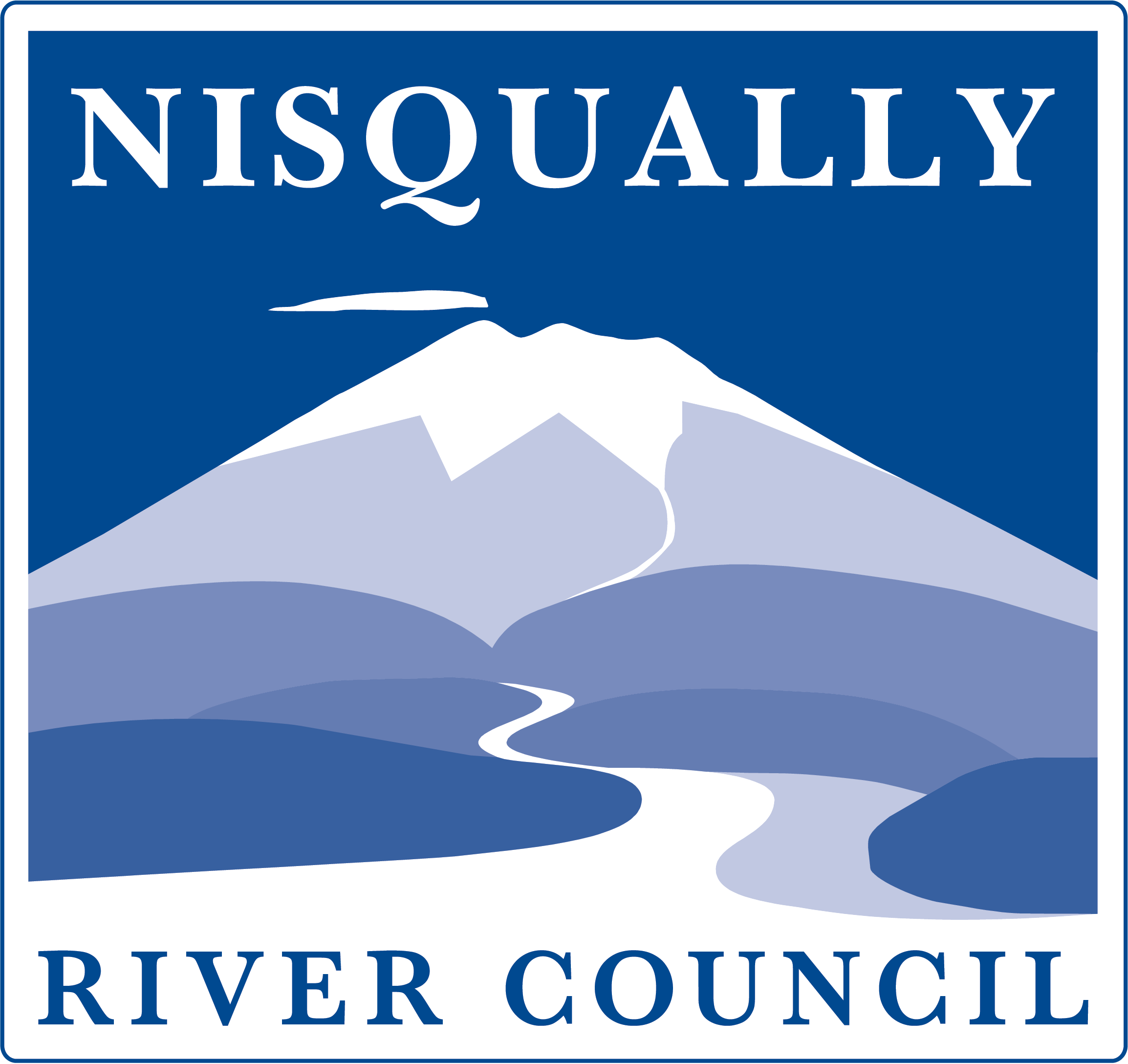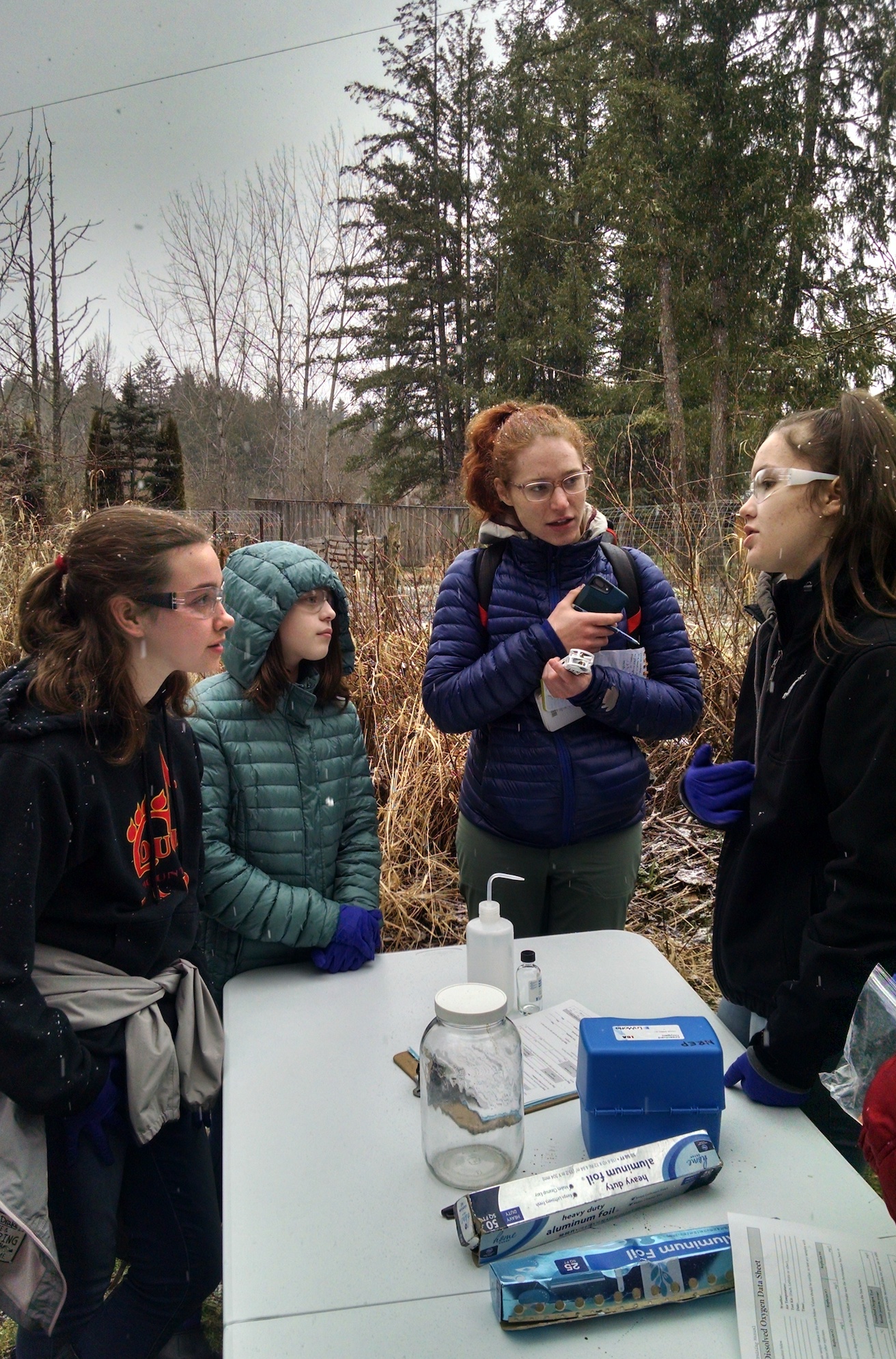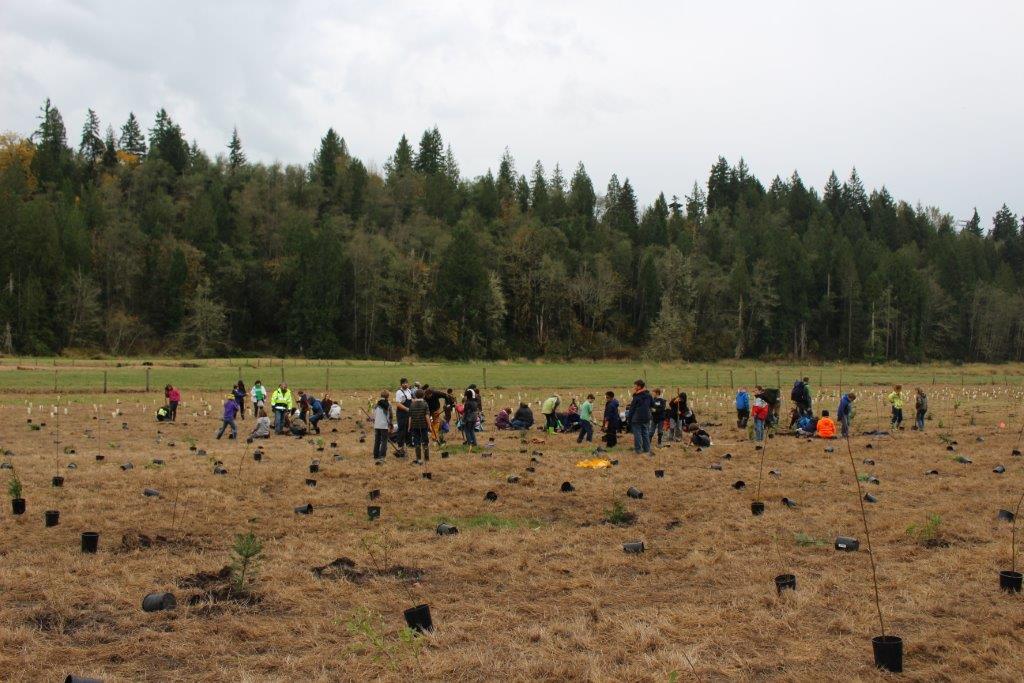Environmental Sustainability: A viable, healthy natural resource base
The Nisqually River Council has been working on environmental sustainability since it’s inception in 1987. Most of it’s successes have been in this realm and the membership of the Council has always had a natural resources management bent. In order to track progress on the large goal of a viable, healthy natural resources base and the sub goals that have been developed to support that large goal, we have defined a series of indicators to track whether things are getting better or getting worse.
The Council has defined environmental sustainability for the Nisqually Watershed as:
The natural resources of the Nisqually watershed — the forests, the fish and wildlife, the water, and the agricultural lands — co-exist with the community and economy it supports. The natural resources of the watershed are finite and can easily be spoiled. With the looming pressures of population growth, we must redouble our efforts to leave a legacy of one of the healthiest and unspoiled watersheds in the region.
Each of the sub goals comes with a set of indicators:
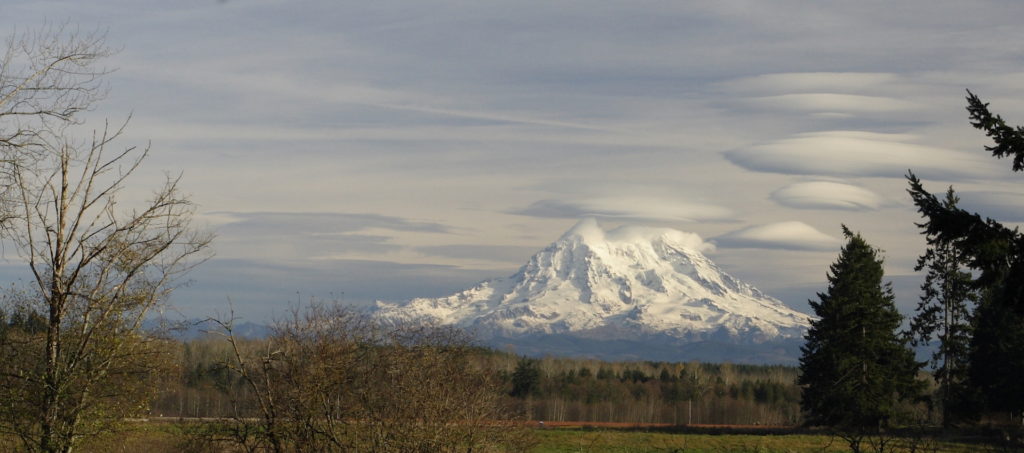
Protect, restore, and enhance ecosystem function
Viable, resilient amounts of all watershed ecosystems are present and providing ecosystem services.
Indicators:
- Prairie lands with a predominance of native species and minimal populations of invasive species
- Forest lands with a diversity of species and age classes; complexity within stands, and complexity inter- and intra-stand
- Snow and ice lands with sufficient amounts to support healthy hydrologic cycles
- Alpine lands continue to support diverse biological communities
- River and stream systems are fully functioning – healthy riparian zones, intact channel migration zones, connected and intact floodplains and wetlands, good water quality, flow regimes which support biological diversity
Protect and enhance biological diversity
Local populations of native species are self sustaining.
Indicators:
- Harvestable amounts of culturally-important species are present
- Invasive species are eradicated or managed
- Diverse communities of native fish, wildlife, and plants are thriving
- Recovery plans for species listed under the Endangered Species Act are fully implemented.
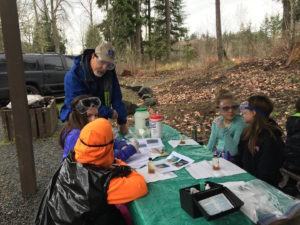
Promote sustainable resource use
All resource extraction is conducted in a manner consistent with the long-term viability of watershed ecosystems.
Indicators:
- Forests are harvested in a sustainable manner. Water usage protects in-stream flows, groundwater recharge areas, and surface filtration systems
- Sustainable agricultural practices protect soils, water quality, and sensitive habitats
- Mineral extraction and associated industries are conducted in a manner that protects water quantity and quality, and air quality, and keeps the ecosystem intact
- Animal densities are within the carrying capacity of the land
Facilitate the appreciation, protection, and enhancement of the watershed through education and participation
Watershed residents, visitors, and others have access to a variety of programs and resources which enable and empower them to be responsible watershed stewards.
Indicators:
- Students engaged in actively exploring, monitoring and restoring their watershed
- Local landowners and community members are active stewards of their lands and watersheds
- Watershed-based education programs are present in schools throughout the watershed
- Organizations and businesses throughout the watershed provide visitors and residents access to educational programs and resources
- Opportunities are provided by various organizations for volunteers to learn and contribute to watershed sustainability.
Tracking of these indicators is an ongoing project with the goal of producing an annual report card for the Watershed.
Next time: Social Sustainability

